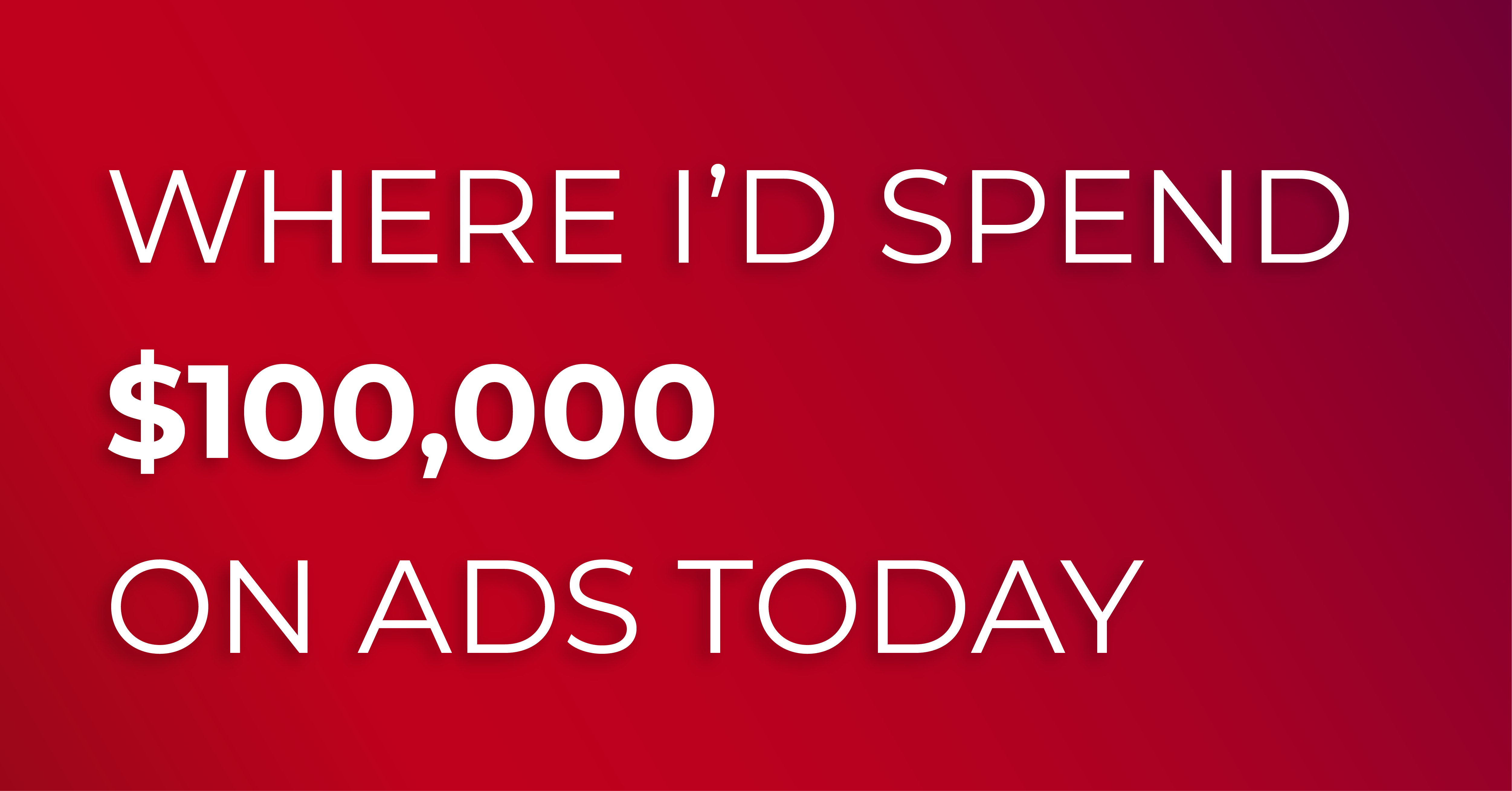
Where I’d Spend $100,000 On Ads Today
Hi there, and Happy April Fool’s Day. In case you’re just looking for April Fools inspiration today, here’s a rundown of today’s April Fools jokes from brands.
As the advertising landscape continues to shift, a handful of folks have started playing the “where would I invest $100k today” scenario through their heads and social media feeds. The question is more than just social media fodder- it’s quite relevant for marketing leaders asking themselves that same question in regards to their own budget now that the answer is no longer simply “Facebook and Instagram.”
For the purposes of this exercise, I’m going to assume that our imaginary brand already has a strong website, brand guidelines, market-proven product(s), an incredible full-service agency on retainer, and a solid tech stack in place. Otherwise, that $100,000 wouldn’t go very far. Let’s also assume that this brand has an AOV of $100 with 50% COGs for easy math and requires multiple touches for a conversion (read: not an impulse purchase). Our goal here would be to achieve a 3x MER, meaning that our imaginary brand is bringing in $3 for every $1 invested into marketing and a net profit of 50% after COGs is factored in. For simplicity’s sake, we’re going to assume that this imaginary product doesn’t bring any additional lifetime value to the table beyond the initial purchase.
With the winds of change continuing to blow in the advertising landscape and recent media buyer darling TikTok experiencing their own challenges this week with reportedly higher CPMs on average than Facebook, it’s more important than ever to acquire customer data while the getting’s good. Apple’s iCloud+ rollout will change the game soon enough, but this exercise is based on TODAY, not the near future.
First thing’s first: I’m peeling off $15,000 of my budget to put some great creative together on a shoe-string budget. Using the time-tested “content pyramid” approach, we should be able to get a hero-style video that tells the brand’s story, snippets fit for ads and organic social posts, and some supporting assets for press kits and website content. I’m well aware that $15,000 is on the low end for creative, but we only have a $100,000 to work with here so balancing creative against anticipated spend is important. You’ll likely need to enlist a savvy creative team like Jon Merlin and his fellow creative magicians at Fidelitas to pull it off.
Now that we’ve got great creative, we need to enable as many touch points with the brand’s target audience as possible. The easiest way to do that is to acquire customer data (read: emails and cell numbers) that can be used to engage prospective customers repeatedly as long as we add value. I’m putting at least $25,000 of my budget behind a variety of campaigns centered around contests, free samples, and third-party collaborations (brands, influencers, etc.) to drive awareness to the brand itself as well as the give-aways. If the contest is big enough / newsworthy or if a partnership can be established, we can leverage earned media coverage to the promotion and allocate part of our budget to drive traffic to the promotion from the media outlets’ own social channels.
A prospective customer data acquisition campaign, no matter how grandiose, isn’t the only lever I’m going to pull though. Assuming that market demand (and competition) already exists for my product, I’d double down on SEO and create a competitive moat to control the lion’s share of organic traffic exhibiting intent-to-purchase. Assuming that this category has modest but not incredible competition along with enough search volume to warrant the investment, I’m going to earmark $30,000 towards organic traffic acquisition in a pay now, earn later (repeatedly) move.
Finally, I’m taking the last $30,000 and running $5,000 tests on Facebook / Instagram, TikTok, Google Display Network, and YouTube (underrated asset if the creative is good- and ours is ). After measuring the early returns, we’ll begin to scale the winning creative and channels while keeping an eye on our overall MER. If successful, our prospecting ads should grease the wheels for that organic traffic we built a moat around, revenue generated from flows via our retention campaigns, and the modest retargeting budget will help us maintain a strong brand recall rate with prospective customers.
This omnichannel approach, powered by both influencer and brand-first creative with a focus on acquiring owned customer data, is the best approach for most eCommerce brands right now in my humble opinion. This strategy should generate a 3+ MER and justify further investment into the already established channels.
What say you?
Want to get into specifics on your brand? Just reply to this blog post and our team will be in touch!



